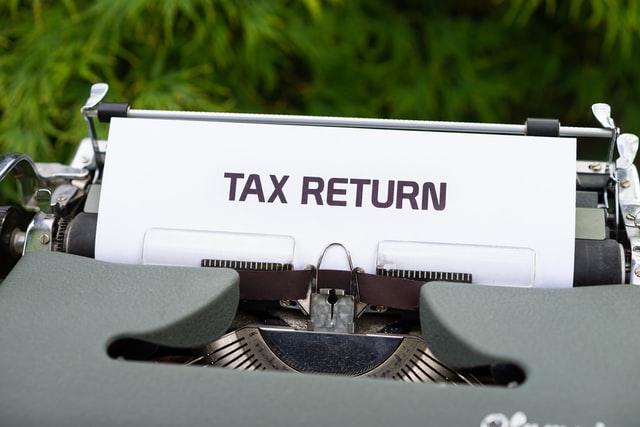Webinar: R&D Tax Credits for Startups

The R&D tax credit is an immediate source of cash for businesses of all sizes. Yet most credits are claimed by just a few of the nation’s largest companies. Startups and SMBs often miss out on this incentive, despite their significant investments in qualified innovation.
In this webinar, Clarus R+D and Gust address common misconceptions about the R&D tax credit. We take a deep dive into the types of work that qualify, as well as the various calculation methods and monetization strategies. There has never been a better time to claim the R&D tax credit than right now, especially for growing businesses.
Facilitators: Peter Swan, Ryan Nash
Presenter: Essie Pacetta
PETER: (01:56)
All right, all. We’re going to go ahead and get started. As I just said, we will share a recording of this afterward both via email and on your tax resource sheets. So don’t worry about that. If you do have questions during the presentation, please do put them in the questions box. We’ll loop back to them during Q&A afterward. Thank you all for coming today. I’m super excited to have Essie from Clarus R+D with us today to walk through how to evaluate and potentially take advantage of the R&D tax credit. It’s a great way to get non-dilutive capital for your startup. It has been a tough year for all of us. So it’s nice to start thinking of tax season as a way to extend your runway rather than just an administrative headache. So I will pass it over to Essie and we’ll get started.
ESSIE: (02:48)
Awesome. Thanks so much, Peter. Thanks to Gust for having us on today. We’ve been partners with Gust for a while now and have worked with many Gust clients or startups. It’s been a pleasure to work with all of you and kind of see the growth that has come from the Gust startups. So excited to have this opportunity to talk to you all today. Again, Peter just introduced me, but my name is Essie Pacetta. I am an account executive for Clarus R+D and I’ve been with the company for just about three years now.
ESSIE: (03:28)
So really what I wanted to get across today and hope to educate you all on today is what is the R&D tax credit. I think that it’s popular right now. But with a lot of the tax credits that we’re kind of discussing lately through the Cares Act and the other forgiveness that we’re seeing with COVID, the R&D tax credit has somehow been lumped in with that. So I’m going to hopefully clear up some misconceptions there and hopefully discover some money that’s on the table for most of you. Just kind of determine what exactly it is that qualifies for the credit, what kind of company qualifies, and help you determine if your work specifically would qualify as well as discussing how much this credit is worth for you. The R&D tax credit is currently the most lucrative tax credit in the tax code.
ESSIE: (04:29)
So if you guys are investing in new product development, it’s very likely that you’re going to qualify. Then go through the process and work with Clarus R+D. I’m going to touch on the ERTC or the employee retention tax credits here at the end. But I’ll be totally honest, a big change on that rolled out in December. Us, along with the rest of the country, are still navigating those nuances, so we can touch on that a little bit and see if you all might qualify there. But we can always schedule a subsequent time to talk about either the R&D or ERTC in further detail.
ESSIE: (05:09)
But our focus here today is to kind of talk about the R&D tax credit. The thing about it is it’s really popular lately. But the credit’s actually been in existence since the early 80s. I like to mention that because one, it’s our job. The reason Clarus R+D exists is to prepare a document that in the event you are ever audited for claiming this credit, that you are protected, and that you get to keep all the money that you claimed on this credit. But as you can imagine, with a tax code that was rolled out in the early 80s, there was an incentive for companies investing in new technology. They couldn’t have anticipated the kind of technology that you guys are all working on now with AI and blockchain and all the different types of technology that exist today, until 2021.
ESSIE: (06:13)
Long story short, we have to interpret the tax code to meet the new technology requirements, which means that claiming this credit is not black and white. It’s not as much as just answering a few questions. We really have to dig into some detail on those requirements. That’s where and why you work with a company like ours. It’s our job to help you interpret the tax code. The other big thing I’d like to mention about the history of the credit is the whole reason that the credit even exists is to incentivize companies to invest in new technology development here in the United States.
ESSIE: (06:55)
So a lot of early-stage companies early on will invest in development with offshore or employees or third parties that employ people overseas, that’s fine. That doesn’t eliminate you from claiming the credit. But any costs that are incurred outside of the United States, you’re not going to qualify for those expenses. So it is a way that if you are considering hiring more here in the US or bringing the development to the United States, this credit will incentivize you to do that. So that’s the good news. Then finally, prior to 2015, and the reason this full credit has become so popular lately, is you have to be a profitable business paying taxes to monetize the credit. It is a tax credit, which means you have to be paying some type of tax. The business has to be paying some type of tax in order to monetize the credit.
ESSIE: (08:04)
Prior to 2015, your only option was to use it as an income tax credit. So you had to be a profitable business. With companies as early stage as you all are, it’s unlikely that you are yet paying taxes. So in 2015, something called the PATH Act was passed, protecting Americans from tax hikes. The PATH Act did a lot of things that I don’t even know about. But what it did do, specifically for the R&D tax credit, is one, it permanently extended the credit. In other words, this credit used to be up for election every five or six years. You never knew if it was going to be in existence in the future, that has since gone away. So if you qualify for this credit, this should be something you make part of your annual tax planning process forever and all time. Because especially if you, let’s just say are a software developer, you guys are going to be investing in improvements to your software every single year. So why not claim a credit that pays you back for that investment?
ESSIE: (09:16)
Then the other thing that is really crucial for you all is that the PATH Act also opened the door for startups to take advantage of this credit as an offset to a portion of your payroll taxes. Specifically, the credit, if you earn a credit, offsets your employer portion of social security tax. So how I want you to be thinking about the conversation we’re having today is for the purposes of the upcoming tax deadline, how you want to think about the credit is that you will be looking at the cost in the activity incurred in 2020 on your R&D.
ESSIE: (10:05)
At the end of the process, if you claim this credit and work with us, we’ll help you prepare a tax form. That tax form would then be included on your tax return. You’ll begin to monetize the credit in the quarter after the quarter you file. So you monetize the credit this year. In other words, you could begin monetizing it as soon as Q2 if you file this quarter. So we’re always thinking about the credit as a credit claimed on the prior year activity being monetized on this year’s taxes. Okay?
ESSIE: (10:45)
So it just mentioned a lot of this, but essentially what the impact of the PATH Act did for startups is one, it just allows them some security in investing more in R&D, knowing that you get a tax benefit from it. The credit is here to stay. Again, if you are qualified to claim this credit, it should be something you’re claiming every single year. The credit is usually worth up to 10% of what you spent on that new product development. I’ll go into further detail on what those expenses are. But this is a big return on your investment. As I mentioned, if the product or the technology you’re investing in is either brand new or you’re making improvements to it on an annual basis, all of that work is going to qualify.
ESSIE: (11:48)
So there is a restriction though to taking advantage of this credit as a payroll tax credit. You have to be considered what the IRS has defined as a qualified startup. So a qualified startup is a company in 2020, because as we’re talking about today, the example we’re using is in the tax year you’re claiming the credit, 2020. Your revenue would have had to be below 5 million in gross receipts. If you’re pre-revenue, obviously, you meet that by a long shot. But also we get a question here a lot like “Oh, well, we’ve earned 5 million since we were founded, but we didn’t earn 5 million last year.” So it’s specific to that tax year. So in 2020, if you earned under 5 million, then you meet requirement number one.
ESSIE: (12:53)
Then requirement number two is that you have to be within five years of earning revenue. So if you’ve had any grocery seats prior to 2016, this would knock you out of your eligibility to take it as a payroll credit. So if one or both of these thresholds are exceeded, you are too mature to take it as a payroll credit. But you still qualify for the credit. If you are too mature to take it as a payroll credit, you would take it as an income credit. Ideally, the IRS believes that if you’ve been earning revenue for more than five years or in a particular tax year earned more than 5 million, that you’re likely to be in pain. Therefore, you can use the credit as an offset to company income taxes, or in the case of a pass-through, it would pass through to your personal returns.
ESSIE: (13:46)
All right. So what have we covered so far? The first and foremost is that the development has to be done here in the United States. The second thing is whether you’re a qualified startup or not, you can take advantage of this credit, perhaps through payroll or as an income tax credit. So if we’ve made it past those areas, then we come to what you see on the screen right now is referred to as the four-part test. I was mentioning before that this tax code was outlined and written in the early 80s. These four parts are the Bible of that tax code. So it’s interpreting these four parts to meet the requirements of the tax code or to essentially match your technology development to these four requirements. If you can meet and pass this test, then you qualify for the credit.
ESSIE: (14:55)
So first and foremost, the IRS defines a type of technology that you’re developing. They refer to this type of technology as a business component. A business component can be a physical product that you’re developing. So a good example here is a medical device. The second business component could be a new or improved process. A good example of improvement or process improvement would be manufacturing process improvement. Software. Anybody developing software, Software as a Service, as long as you intend to sell it, sell, lease or license it, that’s going to be a qualifying, a business component. A new formulation, a formulation could be like, let’s say you are formulating a new cosmetic of some sort. Or if you’re a brewery, a new brew or something like that, or any food and drink kind of formulation.
ESSIE: (16:05)
Then technique, I don’t do a lot of technique development. But if you were to develop a new technique for repairing a certain part of an automobile or something like that, that might be a qualifying activity. So at a high level, we first define what it is that you are developing. Let’s use software development, for example, because I know that Gust has a lot of software companies. So number one is there must be a permitted purpose. So in the tax year, we’re claiming the credit, 2020. What was first entirely new or what improvements did you make to your software’s function, performance, reliability, or quality? We’re not talking about every little sprint release here. We’re talking about your high-level rollout. Okay? Your big four new improvements to your software this year. That’s really what we’re looking to document.
ESSIE: (17:08)
Number two and three go hand in hand. I would say if you were ever to be audited, for this credit, it’s these two questions that an IRS auditor is going to pick apart. Therefore, it’s these two questions that we like to get a lot of technical detail on. So number two says, of the improvements you made in the tax year, in number one, what were you unsure about? You have to say that there was some uncertainty, otherwise, there’s no research and development. The IRS isn’t rewarding you for doing something you already know how to do.
ESSIE: (17:51)
So you have to say you had some uncertainty around your overall capability, the method of development you use, or the appropriateness of your design. You have to kind of be able to explain alternative paths that you might have gone down and why you chose the path you chose. From there, we say, “What process of experimentation did you go through to solve for or eliminate the uncertainty of number two?” Along with software examples, where we typically see some sort of agile methodology being used for testing before you roll something out into production. So that’s a good example.
ESSIE: (18:36)
But a process of experimentation can be as simple as trial and error. As long as you went through some type of testing before you started selling it, or before clients started using it, that’s what we’re looking for here. To take it one step further, we really want to see where you failed. If there was truly R&D being done there, there had to have been some roadblock you ran into. So documenting an example of the failure is also really useful. Then finally, and usually this is the easiest part of the four-part test. All the work you did up here and above had to rely upon the principles of a hard science. So it can be physical, biological, engineering, or computer science.
ESSIE: (19:35)
But it does have to meet and you have to explain that you use the principles of one of these four. A good example of something where people try to claim the credit but then they get to this point and they’re like, “Oh crap, we didn’t use any science to do this,” was like improving an operational process. So you might be implementing a new invoicing system or something like that. While there was probably an improvement to your invoicing system, there were certainly things you didn’t know how they were going to work. You had to go through a certain test to see if it would work the way you wanted it to, you didn’t likely rely on science to do that. So that’s not going to be a qualified activity.
ESSIE: (20:29)
But yeah, usually, this is the point in the conversation. If I was speaking to you directly, I would say, can you answer these four questions? Nine times out of 10, it’s a very quick response I’m getting like, “Yes, I can absolutely answer these four questions, no problem.” If there’s any question about whether you can answer these four questions, absolutely. Let’s schedule a follow-up time to talk. We can go through that in further detail. But the majority of the time, these are pretty straightforward for folks.
ESSIE: (21:02)
So that’s sort of the qualitative side. Then I say, we get to the fun and the quantitative side of this credit. How much is this darn thing worth? Does it make sense to pursue it? So what you see on the screen right now are the qualified research expenditures, QREs for short. There are three, whether you are taking the payroll credit or the income credit, these three are the exact same. So I’ll go through these one at a time and break them down with some examples.
ESSIE: (21:35)
So the first one is wages. Wages, as you can imagine, is exactly how it sounds. It’s the employees you’re paying that are doing the R&D activities. Specifically, if they’re a box one W-2 wages that we’re looking at. We get a lot of questions. Can we include benefits here? No. If it’s box one wages, what you paid them in 2020.
ESSIE: (22:01)
You say, “Okay, what percentage of this individual’s time was spent doing R&D activity?” Pretty straightforward when we’re talking about our engineers, our developers, our front end, our back end, whatever the title you guys come up with. If they’re the ones getting their hands dirty on the development and doing the development, and that’s their primary job, you’re looking at counting their entire salary as a qualified research expenditure. Where it starts to get a little more complicated, complicated is maybe not the right word, but you’ll have to think a little bit more, I would say, is any individual that’s in a direct support or supervision role will also qualify.
ESSIE: (22:52)
A good example here is let’s say you guys are big enough where your CTO is not necessarily spending all of their time developing the software. Maybe they’re really just supervising at this point. But they also are responsible for budgeting and certain business, general business meetings that they’re in, that takes away from their direct supervision or direct role in the development. At that point, you would maybe want to say, “Hey, maybe it’s only 70% of my CTO’s time that’s going to qualify here or 60%.” These percentages are estimates. They have to be reasonable, but they don’t need to be supported by a time tracking system.
ESSIE: (23:47)
Again, you want to think about when you’re claiming this credit, if I were ever to be audited, and an auditor comes in to interview me, would my CTO support the allocation of time I put down for them? That’s kind of the question you want to ask yourself. That’s the question we will be asking as well. Then anybody in a support role, I like to use this example. So we’re a software company. We have somebody on our marketing team that actually does testing of our software. That person while their title is marketing, they also play a role in testing some of the features of our software roll-up because they’re very detail-oriented. So we would capture a percentage of that person’s salary towards the qualifying research expenditure. So that’s what we’re looking at when we’re thinking about our wages.
ESSIE: (24:48)
Contracting expenses are the same thing. The biggest thing here, we see a lot of contractors that are offshore or outside of the United States. So just keep in mind that the work has to be done here in the US. Then the only other thing that’s different about contracting expenses is that the IRS says, “Hey, we would prefer you hire those people, because we get to collect taxes if you hire them as a W-2. But we understand you’re not always able to do that, or it doesn’t always make sense. So we’re going to let you count contracting or third party fees, but we’re only going to let you count them up to 65%.” So if you spent $10,000 on a contractor, your qualifying expense, in this case, is 6500.
ESSIE: (25:44)
Then the final category in these expenses are supplies. Supplies are defined as non-depreciable, tangible used up, or consumed in the process of development or experimentation. What this means is if we’re talking about something you are physically developing, a physical tangible device of some sort, think prototype materials. If you’re developing software, on the other hand, the one exception to this tangible definition is you’re relying on other softwares or other tools to develop your software. So to the extent you might use Amazon Web Services for your testing and development environment, that is a qualifying expense. Or if you use tools like JIRA or GitHub, those are other qualifying expenses.
ESSIE: (26:45)
But if anything is used up or consumed in the process of development, any machinery you buy and own outright is not going to qualify. That’s considered an asset. We also get a lot of questions about laptop computers. Unless you’re renting those laptops, those are not qualified expenses. But we can get into more details on specific scenarios for each of you all. But your back of the napkin math then, it’s adding up these three categories, making sure to account for that 65% reduction here. Add these three categories up for what you spent in 2020. Take that at seven to 10%.
ESSIE: (27:34)
That’s about how much your credit is worth. Now there’s a reason for this range. One, we cannot tell you exactly how much your credit will be until we go through the entire study. Calculating the credit is not straightforward. The IRS loves to make things complicated. Long story short, there are two calculation methods that we can use, and depending on the maturity of your company, will lean towards one or the other. If you are an earlier stage company, a qualified startup, under 5 million, and within five years of earning revenue, you can assume your credit will be 10%. We will use a calculation method that will garner the 10% amount.
ESSIE: (28:19)
If you’re a more mature business and been around longer than five years, I would conservatively estimate 7%. But we could still see a credit of about 10% as well. So it just depends. This is an estimate. So just know that it’s an estimate for your purposes. Until we go through the whole study, we can’t know exactly how much the credit will be worth for you.
ESSIE: (28:52)
All right. So going onto the process here. So if you guys decide you want to move forward with our service, what we would do next then is hop on a kickoff call. A kickoff call is a 45-minute call with one of our dedicated tax credit specialists. This person is going to kind of recap what we discussed here today. But more importantly, they’re going to walk through a demonstration of our software. Our software, I’ve mentioned kind of briefly, is sort of like a TurboTax-like solution for the R&D tax credits. However, it is software and a service.
ESSIE: (29:32)
We are not a software as a service business. What I mean by that is going back to the tax code, none of this is black and white. So when you get access to our software, in large part filling out those software questions or answering the four-part test and getting the expenses into the software, we do have integrations with certain payroll providers. So if you were with a payroll provider for all of 2020, we can kind of import those expenses for you. But at the end of the process, once you’ve submitted your information, our team is actually going to go through a full review, a full audit of all of your responses. We’re really going to be testing you against the four-part test.
ESSIE: (30:23)
So it’s our job to interpret the tax code. Your job is to simply answer the questions. Then we’ll do sort of an iterative process back and forth within the application. We have an application commenting so you’ll be able to see what questions the tax credit specialist has and be able to resolve those within the software. At the end of the process, we’re going to deliver two things. The first thing is a tax form. This is really, really crucial. This tax form has to be included on your tax return. If you file without this tax form, it’s very likely that you will miss the credit altogether. There’s no way to amend this credit.
ESSIE: (31:11)
So if you want to claim the credit, and you guys are running up against a tax deadline, extend. Extend your tax deadlines to either September or October 15th. Because if your deadline is March 15th or April 15th, we still have plenty of time to do this. But at the end of the day, if you know that this is going to take you a bit longer than expected to extend. Because if you don’t extend, you’ll miss out on this credit altogether.
ESSIE: (31:46)
Then the last part of the process is assuming you are a qualified startup, we would work with your payroll provider on the back end. It’s our job to manage the monetization of the credit. So once we know when you file your tax return, we will then communicate with the payroll company. We’ll say, “Hey, they claimed a $50,000 tax credit, and so they’re eligible to begin receiving it this quarter.” Each payroll company is different on how they process these credits. I’ll tell you, that can be quite a bit of a nightmare if you’re considering doing this any other way. We kind of take on that burden for you to make sure you get some money as soon as you can.
ESSIE: (32:38)
So working with our business, a few things. One, we are technology-driven. So the process I think of claiming this credit can be overwhelming, but the software makes it super straightforward. Then we have 100% support throughout the process. So you know there’s a team of people that are ready and willing to answer questions as you’re working through it or even after. So the technology helps to make it straightforward and easy for you, reducing your overall time working on this. But you have unlimited support from our team as well. Pricing that fits, I’ll go through pricing in further detail like one on one conversations. But in the simplest explanation, we are charging somewhere between 15 and 18% of the credit. It depends on your maturity, how quickly you want to pay, a few other factors, how big the credit actually is. Our pricing actually tiers down as your credit increases, a few things like that.
ESSIE: (33:58)
We do also partner with several payroll companies, as well as work with tons of CPAs and tax preparers. So if you guys are working with … We don’t want to replace your tax preparer. We do not prepare taxes. We’re not CPAs. Well, some of our team is CPAs. But we don’t prepare taxes. Long story short, we’ll work with them to answer any questions that they might have, especially if we get into some more nuanced areas of the credit, like control groups or two ADC elections. These are all things that our team can work with your CPA on. Then finally, it’s all documented and secured.
ESSIE: (34:43)
The documentation part of this credit is crucial. If you’re ever audited and you didn’t document it ahead of time, you are going to be subject to fees and penalties no matter what. Then the software obviously is very secure. The nice part about working in the software too is that next year when you go to claim the credit again, we map all of your responses into the subsequent tax year. So it’s really just making those changes that are specific to that particular tax year and not starting all over from scratch, which is nice.
ESSIE: (35:18)
So moving on to a little bit of the employee retention tax credit. Long story short is you can and are eligible now. If you took the PPP loan last year, you were not eligible to take both the PPP and the ERTC. That was the change that occurred in December that now opens the door for even if you took the PPP loan, you’re also eligible for ERTC if you meet the requirements for ERTC. The credit is worth up to 5000 per employee that you employed last year. It can be worth 50% of what you paid each of those employees. So that’s important to know. The other thing that’s important to know is that if you are taking the ERTC credit along with the payroll credit, or sorry, along with the R&D payroll credit, there are ways that we can take advantage of both to maximize the overall tax benefit.
ESSIE: (36:45)
So how do you qualify for ERTCs? So the first qualification for ERTC is that in the calendar year or in any calendar quarter, I should say, of 2020, if either of these were true if your business had to fully or partially shut down due to government authority, that would qualify you to take ERTC.
ESSIE: (37:15)
Or if you had a significant decline in gross receipts for the same quarter in 2020 as you did in the quarter, the same quarter of 2019. So you’re comparing 2019’s Q2 to 2020’s Q2. If you had a significant decline in your gross receipts from 2019 to 2020, that quarter would be eligible to take the credit. So I would say that if you’re evaluating your eligibility for this, that’s the easiest place to start. Because it’s more black and white to look at your decrease or decreases in revenue. This one is harder because you could have been shut down, but your business could have operated still.
ESSIE: (38:18)
Let’s just say for example, like you’re a manufacturing company and you were forced to shut down. You can not do the business and run the business if the manufacturer is shutting down. The plant is gone, you can’t run the business. Or if you were a research company doing computer modeling, and you had to be in a laboratory, for example. Those laboratory employees had to go home and you couldn’t do any lab testing anymore, that would be a reason for your business to not be doing so well.
ESSIE: (38:59)
However, if you are a SaaS Company, and you could operate your business exactly the same working from home as you could working from an office, that’s really probably not going to be deemed as sufficient to meet the requirements of ERTC. So that’s kind of just something to keep in mind. Long story short, if you think either of these two pieces qualify for you, let’s set up a separate time to talk. We’ll put you in touch with the part of our team that is handling our ERTC credit.
ESSIE: (39:45)
With that said, I am done and open for questions. I see that we have a few popped up here. So I’ll go ahead and see if I can read those questions and answer them. But if there are any other questions that you see, Peter, let me know.
PETER: (40:08)
Will do.
PETER: (40:27)
So the first two we have are from James. The first is, is it a refundable credit? The second is, is the credit only available in the current tax year?
ESSIE: (40:41)
So, assuming this is referring to the R&D tax credit, the R&D tax credit is not refundable. So you either have to be paying income tax on the income of the business or you have to be paying payroll tax. So you have to be paying one of those two taxes to monetize the credit. You have to have a tax to offset. So in other words, if you’re a qualified startup, and you don’t have any employees yet, then you can still claim the credit because you probably spent money on contractors and supplies last year. So you can still claim the credit.
ESSIE: (41:32)
But until you hire an employee and start paying taxes to employ them, you don’t have any tax to offset. So the credit will just sit in what I call a credit piggy bank. But more professionally referred to as a deferred tax asset. This answers your follow-up question, the credit largely does not expire. It can be a deferred tax asset for 20 years. So if you don’t use it, like in other words, if you don’t have employees yet, but you plan on hiring later this year, you can begin using it later this year or if you don’t hire until next year, the credit doesn’t expire for 20 years. So it’ll be sitting waiting for you to monetize it as soon as you have employees to use the credit on.
PETER: (42:34)
Awesome. Thanks, Essie. The next one we have is from Sachin, “Do patent filing fees, etc. qualify for this?”
ESSIE: (42:43)
Yeah. That one’s a question we get a lot. I will say it’s a gray area in the tax code. On the one hand, there’s a specific area that says that service fees do not qualify. But largely an auditor is going to view a patent attorney as a service cost. That’s not going to be an R&D cost. But as you know, a patent attorney does input. Without them, you often don’t know what trajectory to take the product because you need to navigate around those patents, patents that are already out there. Right?
ESSIE: (43:36)
So there is an argument, I would say, to include a portion of an attorney’s expenses as qualified R&D. I would say not their entire cost because some of what they do is service base, routine or ordinary. But there is an argument to include it. I’d say if it’s a really big expense, let’s talk about it. If it’s a smaller expense, it’s probably not worth the extra documentation we would go through to support claiming that as a qualifying expense.
PETER: (44:16)
Okay, great. Next step. We have a question about using a contracting service, specifically Upwork, which is a US-based company. But they are hiring offshore resources through a US-based company.
ESSIE: (44:32)
Yeah, yeah, we get this question a lot as well. The work physically has to be done in the United States. So while you are paying a US entity, you would need to know exactly where the employees are working on your development or your software development. I know that Upwork doesn’t make that super clear sometimes. You would have to reach out to them and get an understanding of where the employees are. There is also a way to claim a portion of that expense because there is somebody probably here in the United States working for Upwork that’s supervising the individuals overseas. As you remember, supervision of R&D is a qualifying expense.
ESSIE: (45:25)
So you could probably take a fraction of what you spent on that contracted service to support the individual that is doing the supervision here in the US to the individuals overseas. But again, we’re taking that expense down to 65% already. Then we’re going to take another percentage off of it based on what percent of time is spent working on your project here in the US. Again, this is something that we can kind of talk about further on a one-on-one conversation.
PETER: (46:01)
Great. Thank you, Essie. Next question is, is it worth it to try to get the R&D tax credit or even file taxes if we have four founders, no employees, only expenses so far are website/AWS since we’re all just working on our own time? I’ll fill in the beginning of that. Once you form a corporation or another entity, you do have to file taxes, regardless of whether you have revenue or expenses. But I’ll leave it to Essie to explain the R&D portion of that.
ESSIE: (46:34)
Yeah, I mean, at the end of the day, I would say probably not. I’d say you’re probably a little too young to claim it. Because if you claim the credit, let’s say last year, let’s say you spent 50,000 on those things, and you got a $5,000 credit. Then what do you use that credit on? If you don’t anticipate hiring this year, then you’re kind of paying for a service, for a credit that you may never monetize.
ESSIE: (47:12)
So it’s kind of up to you guys on that front. If it’s worth it or not. Also, if you’re pre-revenue, technically, the clock of that five-year clock doesn’t start ticking until you start earning revenue. So sometimes it’s best to wait until the first year you begin earning revenue because you know you only can take it from five years from earning revenue. So might as well take it at that point. But I’d say it sounds like you might be too young. Again though, it’s something that if you really want to claim it, and you think you’re going to hire people this year, then sure. Why not?
PETER: (48:01)
Cool. Yeah. It sounds like it’s probably a good idea to start thinking about claiming this if you have revenue on the horizon or W-2 employees on the horizon.
ESSIE: (48:12)
Yes.
PETER: (48:14)
Great. All right. Our last question from Rhonda. If your startup is under 5 million and has revenues for three years, can they go back for those deferred tax assets?
ESSIE: (48:27)
Yes, and no. The answer is no on the payroll credit. The payroll credit is only eligible for the specific tax year you’re filing. So since you’ve already filed 2019 and 2018, those years are no longer eligible for the payroll credit. You can go back and amend those tax years to claim the income credit. So if you want to claim those assets, absolutely. Let’s go back and grab them because you can only go back and amend for up to three years. So the statute of limitations eventually will run on those base years or on those prior years. The further out you get from those years, the harder it is to claim the credit because you have to go back and document all the activity that happened in those years.
ESSIE: (49:26)
Long story short, we can claim the credit. Collect it as a deferred tax asset. Then once you owe income tax or if you already are income taxing, you can begin monetizing them right away. Again, they have the 20-year carryforward so you can collect them now and hold onto them for when you owe. Or they’re technically an asset. So if you did or were acquired, they could be used in the sale of your business as well.
PETER: (49:59)
Awesome. That’s a great tip. So that is the end of our participant questions. If anybody has any more, please pop them in. If we’ve got a few more minutes, I just want to note one thing. Our Gust tax providing partner, GBS tax is experienced working with Clarus R+D. So if you’re planning on using them, there should be pretty smooth back and forth between those two service providers. Essie, I did have a question for you.
ESSIE: (50:28)
Sure.
PETER: (50:29)
For somebody who is looking for their first payroll provider, is there anyone that you’ve interacted with that makes this process particularly easy?
ESSIE: (50:40)
Yes. There is a clear answer to this. It’s Gusto. Gusto, by far, does the best job at managing these credits. As I mentioned, when you claim them, you begin to be eligible for monetizing the credit after the quarter you file. So what Gusto does, let’s say you file your taxes in Q1, the first payroll run that you would file or run in Q2, you’ll automatically see that tax stop impounding altogether. So Gusto just stopped impounding the tax until it’s fully utilized or until the credit’s fully utilized. Other payroll providers will continue to collect the tax through these Q2. We’ll then have to amend the 941. We’ll have to send that to the IRS.
ESSIE: (51:37)
The IRS then has to process it and send you a check back in the mail for the amount that you were owed that quarter. That process can take six, 10, 12, 14 weeks, depending on the IRS on that day. Right now, considering everything that’s still going on with the Cares Act, the IRS is behind. So when it comes to cash flow and getting this credit as soon as possible, Gusto is absolutely the route you should go.
PETER: (52:14)
Awesome. Thank you so much. That was all super helpful. I feel like I learned a ton. I hope everybody else did as well. As I said, we will post a recording of this. I’ll post the Q&A as well. We’ll post the slides to the tax resources page. Clarus will follow up via email. If you have any other questions about the R&D tax credit or any other tax obligations, feel free to reach out, and we will point you in the right direction.
Ready to get started? Schedule a free consultation with our team of experts.
Share
ABOUT CLARUS R+DWith custom software backed by a team of tax experts, Clarus R+D specializes in tax credits for growth businesses. Our technology-driven solution simplifies the process, maximizes benefit, and ensures compliance. We partner with accounting firms, financial advisors, investors, payroll providers, and more.

















